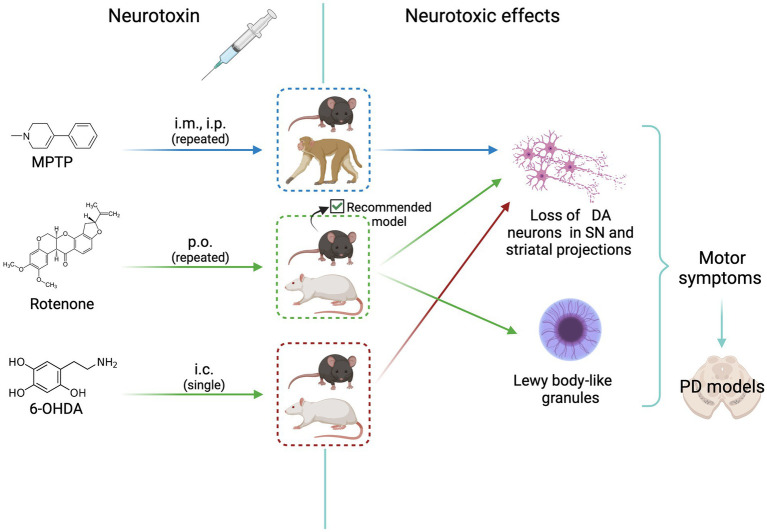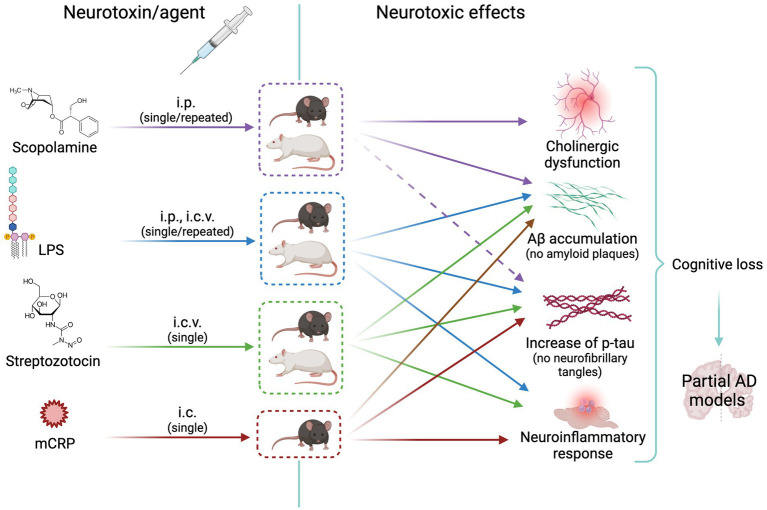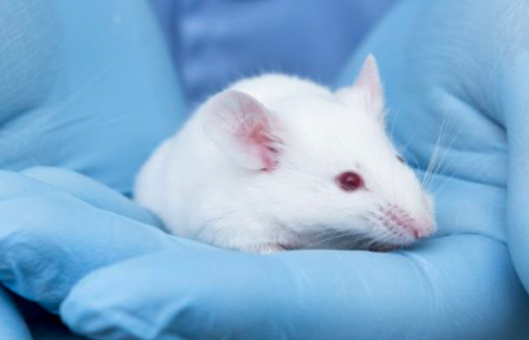Validated and New Experimental Models of Neurodegeneration
Frontiers in Neuroscience. 2024 Jan 8; 17: 1248727.
Authors: Sanfeliu C, Bartra C, Suñol C, Rodríguez-Farré E.
INTRODUCTION
The high prevalence of neurodegenerative diseases is an unintended consequence of the high longevity of the population, together with the lack of effective preventive and therapeutic options. The majority of the models currently in use mimic Parkinson's disease (PD) and Alzheimer's disease (AD), which are the most common neurodegenerative conditions in older adults. AD is the most common age-related dementia, whereas PD is the most common movement disorder with also cases of dementia.
Models Based on Dopaminergic Neurodegeneration
In the central nervous system (CNS), there exist four main dopaminergic systems: nigrostriatal and ventral tegmental, mesocortical, mesolimbic, and tuberoinfundibular areas. The progressive, lengthy, relatively selective, extensive, and irreversible loss of dopaminergic neurons in the substantia nigra (SN) pars compacta and their projections in the corpus striatum (caudate nucleus and putamen) constitute the main pathological manifestation of the neurodegenerative disorder present in PD.
 Fig. 1 Scheme of animal models of neurotoxicity-induced dopaminergic neurodegeneration.
Fig. 1 Scheme of animal models of neurotoxicity-induced dopaminergic neurodegeneration.
- 1-methyl-4-phenyl-1,2,3,6-tetrahydropyridine (MPTP) model of PD. MPTP as a model of xenobiotic-induced parkinsonism has been studied extensively for many years and constituted the gold standard for experimental PD research. The most widely used animal model for MPTP-induced parkinsonism is the pigmented C57BL/6 mice.
- The rotenone model of PD. Rotenone as a lipophilic compound crosses the biological membranes, including the BBB and, in contrast with MPTP, acts directly in the cell inhibiting the electron transport chain of the mitochondrial complex I (NADH: ubiquinone oxidoreductase). This effect reduces ATP formation and can produce ROS and lead to cell death. In contrast with MPTP, there is no selective toxicity.
- 6-hydroxydopamine (6-OHDA) model of PD. It is a neurotoxic xenobiotic analog to the catecholaminergic transmitters. Injecting intracerebrally 6-OHDA in experimental animals is the oldest method of modeling PD. Although with many refinements added over time, 6-OHDA continues to be used to investigate the pathophysiology of PD as well as the preclinical aspects of putative neuroprotective or therapeutic drugs.
Models Based on Cholinergic Neurodegeneration
Cholinergic neurotransmission plays an important role in encoding new memories and other high-brain functions. This fact together with the cholinergic atrophy paralleling cognitive decline in aging and AD led to the early cholinergic hypothesis of AD. Rat and mouse models of cholinergic neurodegeneration are still widely used for screening pro-cognitive and anti-dementia drugs, including those addressed to AD.
 Fig. 2 Scheme of animal models of neurotoxicity-induced cholinergic or neuroinflammatory changes leading to Alzheimer's disease-like neurodegeneration.
Fig. 2 Scheme of animal models of neurotoxicity-induced cholinergic or neuroinflammatory changes leading to Alzheimer's disease-like neurodegeneration.
Models Based on Neuroinflammation-Induced Neurodegeneration
Neuroinflammation, that is, the inflammatory response within the CNS, is a double-edged sword depending on its triggering cause, its duration until it resolves, and the stage of frailty of the organism. The innate immune cells of the nervous system will fight against infectious agents or local injuries, but if their response is deregulated, they can contribute to further injury and either initiate or worsen neurodegeneration.
- Lipopolysaccharide (LPS) model of AD. LPS, the major component of the outer membrane of Gram-negative bacteria, is widely used to induce neuroinflammation in rats and mice. LPS elicits a robust neuroinflammatory response followed by cognitive loss and neurodegeneration.
- Streptozotocin (STZ) model of AD. STZ is a naturally occurring glucosamine-nitrosourea compound identified in a Streptomyces bacteria strain. In the brain, both i.p. and i.c.v. injections of STZ cause neuroinflammation and cognitive deficits in mice and rats.
- Monomeric C-reactive protein (mCRP) model of AD. mCRP is a proinflammatory molecule yielded by activation and disaggregation of the pentameric CRP. Clinically, it has been associated with the triggering and progression of AD through its deposition in stroke-damaged areas.
- Neuroinflammation models of PD. Mixed proinflammatory and dopaminergic toxin models were developed for PD. Other neurodegenerative diseases such as Huntington's disease or amyotrophic lateral sclerosis also show neuroinflammation, but this is not an early mechanism, and specific animal models of neuroinflammation were not established.
Creative Bioarray Relevant Recommendations
| Service/Product Types | Description |
| Neurological Disease Models | Creative Bioarray uses animal models of different neurological diseases to provide professional drug or therapy testing and research services. |
| Alzheimer's Disease Modeling and Assays | Creative Bioarray is offering Alzheimer's disease modeling and assays to help our customers open the door for generating new insight into disease pathophysiology and improving the process of drug development. |
| Parkinson's Disease Modeling and Assays | Creative Bioarray is offering Parkinson's disease modeling and assays to help our customers generate new insight into disease pathophysiology and accelerate the process of drug development. |
RELATED PRODUCTS & SERVICES
Reference
- Sanfeliu C, et al. (2024). "New insights in animal models of neurotoxicity-induced neurodegeneration." Front Neurosci. 17, 1248727.

